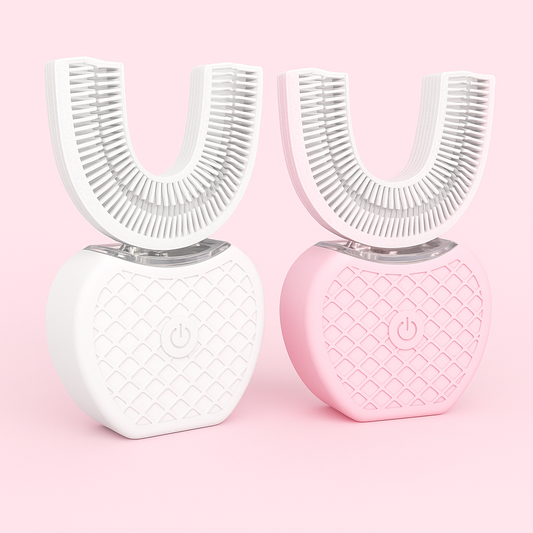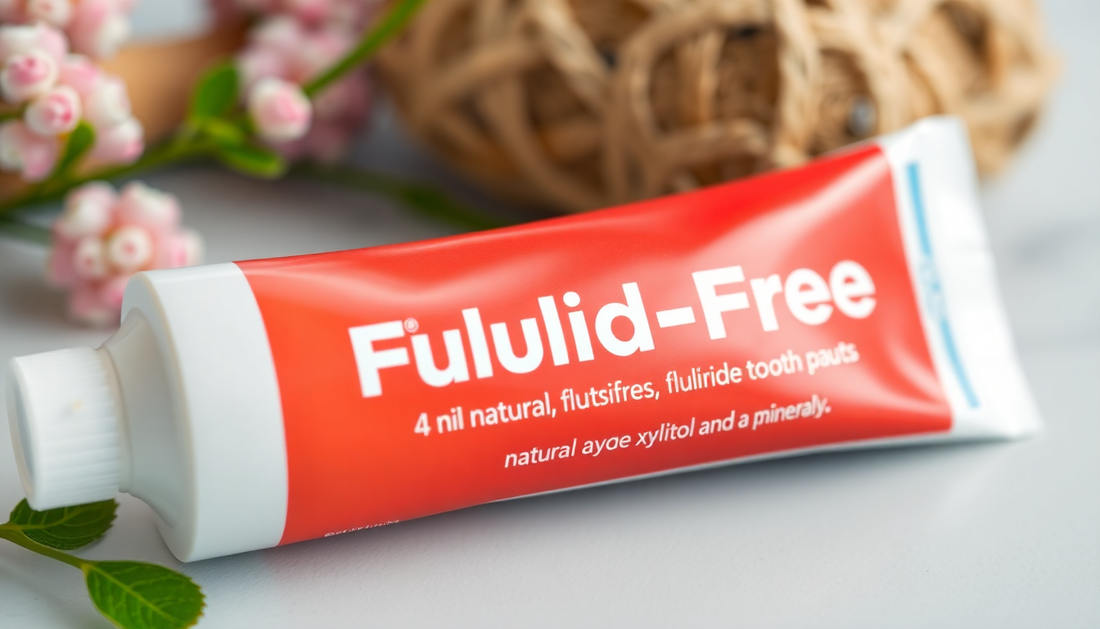Introduction
Consumers increasingly demand oral care products that do more than just polish teeth: they want formulas that support gum health, reduce sensitivity, fight harmful bacteria, and brighten smiles without harsh bleaching agents. That shift has helped elevate fluoride-free alternatives — especially those pairing niacinamide and xylitol — as contenders for the title of best whitening toothpaste for healthier, stronger teeth.
This long-form guide explores the science behind fluoride and fluoride-free approaches, explains how niacinamide + xylitol formulas work, compares whitening mechanisms, and gives practical buying and usage advice so you can choose a toothpaste that fits your oral-health goals. It’s optimized for terms like good whitening toothpaste, toothpaste without fluoride, toothpaste with xylitol, niacinamide toothpaste, and best toothpaste for whiter teeth.
Why toothpaste choice matters for long-term oral health and appearance
Many people equate whitening with peroxide-based bleaching. But long-term oral health and a consistently bright smile require a broader approach: protecting enamel, controlling plaque and harmful bacteria, supporting healthy gums, and using safe polishing agents. A well-designed toothpaste does several things at once:
- Removes surface stains through gentle polishing and chemical action.
- Protects or repairs enamel to prevent further discoloration and sensitivity.
- Supports gum health to reduce inflammation and staining at the gum line.
- Helps control the oral microbiome to lower plaque, acids, and bad breath.
Fluoride: benefits, concerns, and why some people prefer fluoride-free
Fluoride has a long track record in dentistry for preventing cavities by aiding remineralization of tooth enamel and making enamel more resistant to acid attacks from bacteria. Most dental associations worldwide recommend fluoride toothpaste for general cavity prevention.
However, some people choose toothpaste without fluoride for one or more reasons:
- Personal preference or avoidance of fluoride for lifestyle reasons.
- Concerns about fluoride ingestion in young children (dose and supervision matter).
- Desire for alternative active ingredients such as hydroxyapatite, calcium phosphate, niacinamide, or xylitol that offer different benefits.
- Preference for a more multifunctional formula that targets gum health and the oral microbiome in addition to strength and whitening.
Choosing fluoride-free can be safe and effective for many adults when the toothpaste contains alternative remineralizing or protective ingredients and when users maintain good oral hygiene and dental care habits. Always consult a dentist if you have high decay risk or active cavities before switching away from fluoride.
Introducing niacinamide and xylitol: what they are and why they matter
Two ingredients rising in popularity within fluoride-free whitening toothpaste formulations are niacinamide and xylitol. They serve complementary roles in supporting oral health and improving the appearance of teeth.
Niacinamide (Vitamin B3): calming inflammation and supporting tissues
Niacinamide, also known as vitamin B3, is widely used in skincare for its anti-inflammatory and barrier-strengthening effects. In oral care, its potential benefits include:
- Reducing gum inflammation and helping soothe irritated gingival tissues.
- Supporting mucosal barrier health, which may reduce bleeding and tenderness.
- Indirectly improving appearance by reducing inflammation-related discoloration at the gum line.
Although niacinamide is newer to toothpaste formulations than to topical skincare, initial clinical data and product-level research indicate it is well tolerated and can be helpful as part of a comprehensive oral-care strategy focused on gum health and gentle whitening.
Xylitol: a sugar substitute with oral-health benefits
Xylitol is a naturally occurring sugar alcohol used as a sweetener and recognized for its oral-health properties. Key advantages include:
- Reducing levels of cavity-causing bacteria such as Streptococcus mutans by disrupting their metabolism.
- Lowering plaque accumulation and the production of acids that demineralize enamel.
- Supporting a healthier oral microbiome when used regularly.
Xylitol is well-documented in clinical research for lowering decay risk and is often included in gums, mints, and toothpastes targeted at cavity prevention and breath control. When combined with polishing and remineralizing agents, xylitol can help a fluoride-free toothpaste provide both health and whitening benefits.
How niacinamide + xylitol formulas whiten without peroxide or fluoride
These fluoride-free whitening toothpastes don’t rely on aggressive bleaching. Instead, they use a layered approach:
- Mechanical stain removal: Low-abrasivity cleaning agents (e.g., fine silica) polish away surface stains from coffee, tea, tobacco, and food pigments while protecting enamel.
- Biochemical action: Xylitol reduces bacterial acids and plaque that cause tooth dulling and discoloration.
- Gum support: Niacinamide reduces gingival inflammation and bleeding that can accentuate staining near the gum line.
- Remineralization: Fluoride-free formulas often include hydroxyapatite, calcium phosphate, or other remineralizing minerals to rebuild enamel microstructure and restore natural luster.
By addressing stain buildup, bacterial causes of discoloration, and gum health simultaneously, niacinamide + xylitol toothpastes can produce perceptible whitening over weeks without the sensitivity sometimes caused by peroxide.
Comparison: Fluoride-containing whitening vs. All-in-one fluoride-free (niacinamide + xylitol)
-
Fluoride-containing whitening toothpaste
- Best at preventing caries through fluoride remineralization.
- Often pairs with mild abrasives or low-concentration peroxide for whitening.
- Recommended for patients with high decay risk or children in communities with low fluoride exposure.
-
Fluoride-free niacinamide + xylitol toothpaste
- Targets inflammation, bacterial balance, and enamel support using non-fluoride strategies (hydroxyapatite, calcium, phosphate).
- Can be gentler on sensitive teeth due to reduced or no peroxide and low abrasivity.
- Appeals to those seeking a holistic oral-care approach and fluoride avoidance.
The right choice depends on individual dental history, decay risk, and personal priorities. For many adults with low to moderate decay risk who value gum health and gentler whitening, niacinamide + xylitol formulas are an attractive alternative.
Other supportive ingredients commonly paired with niacinamide + xylitol
High-performing fluoride-free toothpastes often include additional active ingredients that boost whitening and overall oral health:
- Micro-hydroxyapatite: A biomimetic mineral that helps fill enamel micro-defects and restore surface gloss and strength.
- Calcium and phosphate systems (CPP-ACP, amorphous calcium phosphate): Ingredients that support mineral deposit and enamel repair.
- Low-abrasivity silica: Gentle polishing agents that remove stains without excessive enamel wear (look for RDA guidance).
- Essential oils and plant extracts: For breath control and added antimicrobial support (e.g., green tea, neem, or clove oils) — useful but vary by formulation.
- Enzymes: Some toothpastes include proteolytic enzymes to help break down biofilm and reduce staining potential.
Understanding abrasivity and RDA: why it matters for whitening toothpaste
Whitening effectiveness should be balanced with enamel safety. The Relative Dentin Abrasivity (RDA) score indicates how abrasive a toothpaste is. High-RDA products can remove stains faster but risk long-term enamel or dentin wear, which can increase sensitivity and make teeth appear yellower. For daily use, choose toothpastes with a low-to-moderate RDA and prioritize formulas that achieve whitening through microbiome and remineralization strategies, not only abrasive polishing.
Evidence overview: what research says about niacinamide and xylitol
Clinical evidence supports xylitols role in reducing S. mutans levels and lowering caries risk when used regularly. Niacinamides oral benefits are less extensively studied than xylitols but its anti-inflammatory action and mucosal benefits are promising and increasingly explored in dental research.
Combined formulations that include remineralizing minerals plus xylitol have shown positive outcomes for plaque reduction, enamel protection, and decreased sensitivity in several product evaluations. As always, high-quality randomized controlled trials remain the gold standard; the body of evidence on niacinamide in oral care continues to grow.
Who is a good candidate for niacinamide + xylitol toothpaste?
- Adults seeking gentle, long-term whitening without peroxide-based bleaching.
- People who experience sensitivity with peroxide or high-abrasivity whitening pastes.
- Those who want to prioritize gum health and inflammation reduction as part of their whitening regimen.
- Consumers looking for toothpaste without fluoride for personal or local-exposure reasons, but who still want enamel support from alternative minerals.
When fluoride may still be preferable
Certain situations call for fluoride-containing toothpastes:
- Children at risk for cavities (follow pediatric dosing and supervision).
- Adults with active decay, multiple restorations, or a history of frequent cavities.
- Communities with limited access to dental care where fluoride is an effective public-health measure.
If you have dental conditions or high decay risk, consult your dentist before switching to fluoride-free alternatives.
How to use niacinamide + xylitol whitening toothpaste for best results
- Brush twice daily for two minutes with a soft-bristled toothbrush.
- Use gentle, circular motions and avoid aggressive scrubbing that can abrade enamel and gums.
- Floss or use interdental cleaners once daily to remove plaque between teeth where toothpastes cant reach.
- Consider tongue cleaning to reduce staining and improve breath control.
- Pair with a remineralizing mouthwash if recommended — look for alcohol-free formulas to avoid drying the mouth.
- Limit staining foods and beverages or rinse after consuming them to slow stain buildup.
Shopping guide: what to look for on the label
When hunting for the best toothpaste that whitens teeth and supports oral health:
- Check for niacinamide and xylitol listed as active or prominent ingredients.
- Look for remineralizing components (hydroxyapatite, calcium, phosphate, CPP-ACP) if you want fluoride-free enamel support.
- Verify low-to-moderate RDA and avoid high-abrasivity formulas for daily use.
- Seek transparent brands that publish ingredient concentrations or third-party testing where possible.
- Read reviews for real-world feedback on gum comfort, sensitivity, and whitening over several weeks.
Practical tips for combining toothpaste with professional whitening or dental care
If your whitening goals are aggressive (several shades) consider these steps:
- Use a niacinamide + xylitol toothpaste daily to maintain gum health and minimize sensitivity during professional whitening treatments.
- Consult your dentist about timing: some dentists recommend avoiding strong oxidizing agents at the same time as certain remineralizing treatments — follow professional advice.
- After professional whitening, maintain results with low-abrasivity, remineralizing toothpaste and regular dental cleanings.
Environmental, ethical, and consumer considerations
Many modern oral-care brands emphasize sustainable sourcing, recyclable packaging, and clean-label formulas free from SLS, parabens, or microplastics. If sustainability matters, look for brands that provide transparency on packaging materials and ingredient sourcing while also including niacinamide and xylitol for oral benefits.
Frequently asked questions (FAQ)
-
Will niacinamide + xylitol toothpaste whiten my teeth as fast as peroxide?
No. Peroxide-based whitening often yields faster, more dramatic shade changes. Niacinamide + xylitol formulas deliver gentler, cumulative whitening by reducing staining causes, improving gum health, and restoring enamel luster over weeks to months.
-
Is xylitol safe for everyone?
Xylitol is safe for humans in toothpaste and chewing gum amounts. However, xylitol is extremely toxic to dogs — keep products away from pets.
-
Can I use niacinamide toothpaste if I currently use fluoride?
Yes, but consult your dentist if you have a high risk of decay. Some people alternate or use fluoride-containing products in consultation with dental professionals.
-
How long before I see a difference?
Users commonly report reduced gum sensitivity and cleaner-feeling teeth within 14 weeks; visible whitening can take several weeks to a few months depending on diet, stain levels, and consistency.
User stories: real-world experiences
Many users who switch to niacinamide + xylitol toothpaste share similar outcomes: less gum bleeding, fewer flare-ups of sensitivity, and progressive lightening of surface stains. People who previously experienced sensitivity with peroxide-based whiteners often appreciate that these formulas brighten without provoking discomfort.
SEO tips for finding the right products online
To find the best toothpaste for whiter teeth that aligns with these features, use search phrases and filters such as:
- "toothpaste without fluoride" + "xylitol"
- "niacinamide toothpaste" + "whitening"
- "best toothpaste whitening teeth" + "low RDA"
- "good whitening toothpaste" + "sensitive teeth"
Combining ingredient-focused queries with terms like "best" or "reviews" helps surface user feedback and product testing information that can guide purchasing.
Conclusion: Why niacinamide + xylitol formulas are rising to the top
Niacinamide + xylitol toothpaste offers a modern, holistic path toward a whiter, healthier smile. Rather than focusing solely on rapid shade change, these formulas address the biological and structural causes of staining and sensitivity. They reduce harmful bacteria, calm gums, and support enamel repair — all of which contribute to a brighter, more resilient smile over time.
For those seeking a fluoride-free whitening option that prioritizes oral health and long-term tooth strength, niacinamide + xylitol blends represent a compelling choice. They are especially suited to adults who want gentle daily whitening, people with sensitivity concerns, and anyone invested in gum health as part of their cosmetic goals.
Sponsored recommendation: where to start shopping
If youre ready to try a niacinamide + xylitol toothpaste, consider exploring reputable brands that publish transparent ingredient lists and emphasize remineralization. For example, Havana Body offers several oral-care products aimed at whitening and overall tooth health. Visit Havana Body to browse fluoride-free and whitening toothpastes designed to support healthier, stronger teeth: best toothpaste for whiter teeth and toothpaste without fluoride.
Ready to upgrade your oral-care routine? Explore Havana Bodys selection to find a niacinamide + xylitol formula that fits your needs and start a gentler, more health-focused whitening journey today: buy Havana Body products.
Final tips
- Always read labels and prioritize low-abrasivity formulas for daily use.
- Consult a dental professional if you have active dental disease, frequent cavities, or are unsure about removing fluoride from your routine.
- Combine a quality toothpaste with consistent oral hygiene habits, a balanced diet, and regular dental visits for the best long-term whitening and oral-health outcomes.


